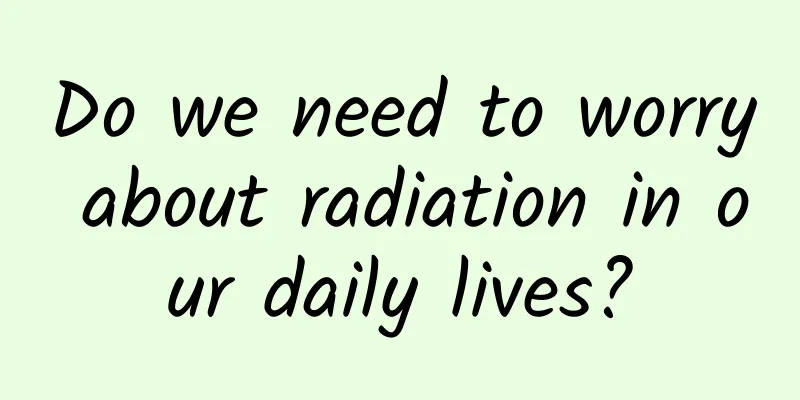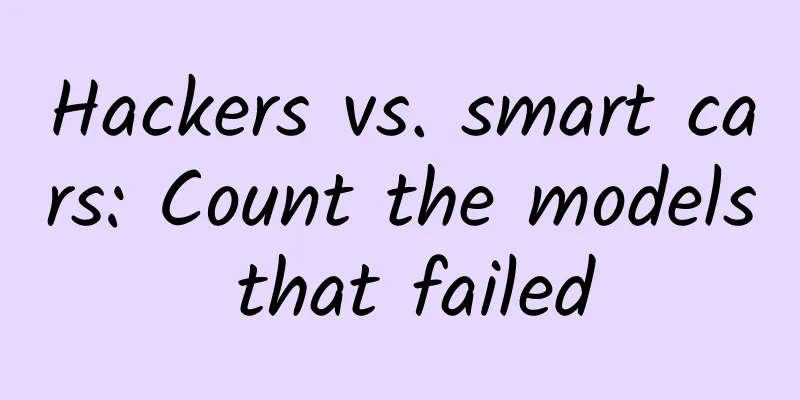Do we need to worry about radiation in our daily lives?

|
When it comes to radiation, many people will think of images such as a large nuclear explosion or a scary mutation, but this is actually too one-sided. Because in the era when life first appeared, the radiation on the earth was much higher than it is now. However, these lives at that time did not become extinct due to high radiation. Instead, they coexisted with radiation and evolved to this day. So, what exactly is radiation, and do we need to worry about its impact on living things today? To answer this question, we must first understand the concept of radiation. Radiation is divided into two types according to whether it can ionize atoms and molecules: ionizing radiation and non-ionizing radiation. Ionizing radiation includes particles such as alpha particles, beta particles, neutrons, as well as gamma rays, X-rays and some ultraviolet rays with shorter wavelengths in electromagnetic waves; Non-ionizing radiation mainly includes visible light, infrared rays, radio waves and ultraviolet rays with longer wavelengths in electromagnetic waves . Compared with non-ionizing radiation, ionizing radiation has stronger energy, so the radiation hazards we often talk about mainly come from ionizing radiation. However, not all ionizing radiation is harmful. Ionizing radiation can be divided into two types: one is electromagnetic radiation and the other is nuclear radiation . Electromagnetic radiation is pure energy, which is generated by the interaction of radio and magnetic waves in space ; nuclear radiation is generated in the nuclei of radioactive elements, because the isotopes formed by different combinations of protons and neutrons are not stable enough, so they randomly release energy to the outside world . Nuclear radiation can be said to be the most harmful type of ionizing radiation. In our modern society, most activities are based on sending, receiving and detecting electromagnetic radiation. For example, we send and receive emails on our mobile phones through radio waves, or electromagnetic radiation exists during X-rays taken in hospitals. But sometimes, we are not just in a radiation source in our lives, because when you are using your mobile phone, other people around you may also be using their mobile phones. At this time, the radiation source is the sum of all electromagnetic radiation, also known as background radiation . This is also the radiation we are most exposed to in our daily lives. Background radiation can be divided into two categories: natural and artificial. Natural background radiation has nothing to do with human activities, and most of it exists in nature itself. Cosmic Microwave Background Radiation For example, people living at high altitudes are exposed to more radiation than those living at sea level because cosmic rays (high-energy particles) from outer space interact with the atmosphere, which is less able to absorb them because the air is thinner at high altitudes. People also receive some extra cosmic ray exposure when they fly in airplanes. In addition, there is artificial background radiation. As the name suggests, it refers to the background radiation caused by human activities. The main source of artificial background radiation is various medical activities, such as X-ray imaging, CT and other medical imaging diagnostic methods, as well as treatment measures such as radiotherapy. In economically developed areas, medical technology is relatively more advanced and complete, and local residents are more exposed to medical methods involving radiation diagnosis and treatment. Therefore, the proportion of radiation from medical activities in the total background radiation is higher. However, the ratio is only a broad generalization. In fact, when evaluating the impact of radiation on organisms, what is generally considered is the radiation dose, that is, the total amount absorbed by the human body within a certain period of time , and its unit is Sievert (SV). Of course, we don't use such a large unit as Sievert in our daily life, and we usually use millisievert (mSV) to express it. As mentioned above, due to differences in altitude and surface environment around the world, the background radiation level is slightly different. On average, the radiation dose (including background radiation) received by each person per year is only 6.3 millisievert. The situation that poses the greatest threat to health is actually: being exposed to a large amount of ionizing radiation in a short period of time, also known as acute exposure. In this case, the damage caused by ionizing radiation exceeds the body's ability to automatically repair the damage, which can lead to cancer, cell dysfunction and even death. Fortunately, this kind of acute exposure is very rare. Only areas with nuclear leaks or meteorite falls will maintain high levels of ionizing radiation , while most people are exposed to low levels of ionizing radiation from artificial and natural sources. Therefore, there is no need to be afraid of radiation. |
>>: Do you have ground beetles in your home? Don’t be afraid!
Recommend
More than 500 experts participate in the App Store review process; less than 1% of rejected developers file an appeal
As the Epic Games vs. Apple court case progresses...
Universal template for event planning and promotion!
Event planning is a tedious and detailed job. Eve...
Template for planning fission activities!
1. #Split the wheel lottery game and get a gift b...
In Xinjiang, I saw the legend of "a thousand years of standing"
On the shore of Lop Nur Lake in Xinjiang Uygur Au...
How should a new brand name itself?
“Words are finite, but their meanings are infinit...
Using macaca for mobile hybrid automation testing (Part 3)
macaca provides a command to start the webdriver ...
New product online event planning and promotion!
When it comes to online event planning, the most ...
Talk about user cognitive cost!
Let me first explain the general logic. Professor...
Why does the pink muhly grass, a popular internet celebrity from abroad, amaze the world?
Recently, the pink muhly grass has entered its be...
The process and methods of building an activity operation plan!
If you want to obtain more traffic and promote su...
13 case studies teach you 3 tricks to achieve 0-budget planning of a million-PV event
In a startup company, both personnel and support ...
Can contact with shopping receipts cause cancer? Is bisphenol A in machine-printed receipts really that scary?
gossip "Bisphenol A in machine-printed recei...
Job hopping at the slightest disagreement: product operation, App promotion, SEM, UI design, new media operation (latest job search and recruitment information)
Job Information Latest: Job search, Shanghai area...
We have summarized ten changes for you to understand in iOS 10 beta 4
On the morning of August 2, Apple released the fo...
How does Baidu Promotion block malicious clicks from peers?
The SEM promotion account was maliciously clicked...









